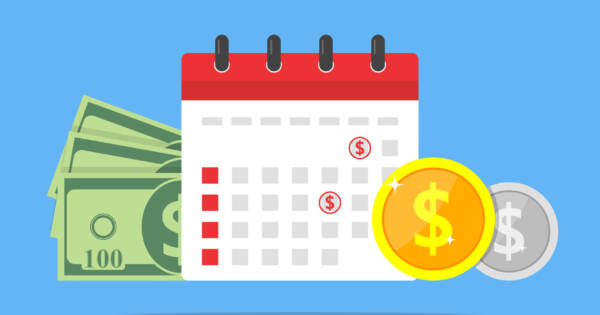Impulse spending happens to everyone, whether it’s tossing a last-minute treat into your cart or clicking “buy now” on something you never planned to purchase. Those small, unplanned buys feel harmless, but they can quietly drain your budget and create financial stress over time. Occasional treats are fine, yet frequent impulses add up quickly. Understanding the habits and triggers behind spontaneous purchases can make it easier to regain control, reduce unnecessary expenses, and build healthier long-term money habits.
The Psychology of Impulse Buying
Retailers (both online and brick and mortar stores) know all the tricks to extract the maximum amount of money from your wallet. There’s a reason that checkouts are lined with oodles of cheap buys, from snacks and drinks to batteries, lip balm, or smartphone chargers. You have no choice but to walk right by them, and stores hope you’ll just grab that extra “oh I needed that” item.
The same psychology can be found in grocery stores, which commonly hide the cheaper staples like bread, eggs, and milk, as far from the front entrance as possible. If you have to walk past thousands of other items to get the milk you came in for, it’s more likely an extra item or two falls into your cart.
And don’t even get us started on targeted online ads. Your digital advertising profile, although anonymous, knows more about you than you think. It’s no coincidence that if you start browsing information about a certain product, you’re suddenly bombarded with ads for it on Facebook or Instagram. They already know you’re interested, so they pushing hard to close the deal!
How to Stop Impulse Buying
If you find yourself strapped for cash at the end of every month, you should take a closer look at your spending. More specifically, how much are you blowing on those “little things?” You know, those things that are small and don’t really count. But they do count, and all that impulse spending could be ruining your finances. Here’s how to stop the bad habit for good.
Make a Budget and Stick To It
This is the most common and most obvious piece of financial advice. It’s spouted often — so often that you may see it and simply roll your eyes, thinking “jeez, not this again.”
But yes, it’s this again.
Making a budget is extremely important. You need to include every dollar coming in, and every dollar going out. There are tons of different methods to choose from (or apps to use), so find one that works for you. You can even allocate a small portion of your monthly spending for “discretionary spending.” Or in other words, impulse buying. Just make sure you stick to your limit.
Set Larger Goals
One of the best ways to avoid impulse spending is to have a larger, more expensive goal on the horizon. It could be a lavish vacation or an expensive new piece of technology. Or maybe something even larger, like your dream vehicle. Whatever it is, the urge to put more money towards your larger goal should override your desire for that impulse buy. At least, most of the time.
Another handy way to keep your large goal in mind is to give yourself frequent reminders. Whether that means putting a photo of your dream vacation as your phone’s lock screen or simply slapping a handwritten post-it note on your PC monitor, those reminders will hopefully help you curb the unnecessary excess spending.
Delete Your Browser’s Payment Autofill
Most modern browsers (including those on your smartphone) now offer to save a bunch of your details for you. That includes things like names, addresses, passwords, and yes, even payment information. While it can be handy to not have to manually fill out a new form every time you want to make an account or buy something, it can be a bit too handy, if you catch our drift.
Do yourself a favor and remove the autofill feature when it comes to payment details. It’s just too easy to make purchases with a couple of taps. If you have to actually get up and go find your wallet, type in your credit card number, fill out your shipping details, agree to the terms and condit — ehh, never mind. That’s a lot of effort just to purchase something you don’t really need.
Set Your Own Parental Controls
Speaking of easy online shopping, go ahead and enable the extra security settings on your own device. Whether you’re prone to splurging on game microtransactions or can’t resist the latest gadget that targeted ads are pushing, do something to make it more difficult.
With ApplePay combined with TouchID or FaceID on iOS devices, spending a few bucks is as easy as tapping your screen — or even looking at it. Most comparable Android devices have similar features too. Much like removing your autofill information from your web browser, setting some purchasing controls on your device will help too. Even the extra time it takes to type out your password every time you want to buy something gives you a short moment to reconsider your impulse spending.
Audit Your Inbox
There’s a good chance that your email inbox is filled up daily with messages from various brands trying to get your money. Whether it’s a FLASH SALE or BOGO offer or a 15% Off Friday, these emails are simply trying to entice you to buy buy buy! They come with limited time offers and expiring discount codes, to feed into your FOMO. Don’t let them separate you from your hard earned cash.
Go through your inbox every few days. When you see those emails, unsubscribe from them. You may have to do it manually (most of these emails have a tiny ‘unsubscribe’ button near the bottom of them), but Gmail offers a handy “delete and unsubscribe” feature that does everything for you. If that doesn’t get rid of them, consider blocking the sender outright.
It may take a month or two of routine deleting, unsubscribing, and blocking. However, you should eventually have an inbox that is mostly free from those annoying attempts to get you to buy things you don’t really need.
Shop With A Buddy
It’s easy to buy that diet-cheating chocolate bar or silly trinket when you’re shopping by yourself. After all, there’s no one there to judge you but yourself. However, you can curb a lot of those impulses simply by shopping with a buddy who will hold you accountable. Or, as the kids in South Park said, an accountabilibuddy.
Go ahead and be up front with your shopping partner. Tell them you’re trying to save some money by buying less useless stuff, and that they are allowed to question your buying choices. It works even better if you’re doing the same thing for them, but it’s not absolutely necessary. With your friend looking over your shoulder, you won’t be as tempted to throw those splurge items into your shopping cart.
Don’t Fall For Retailer Tricks
We already discussed a few of the ways that retailers trick you into spending more. They put certain items in strategic locations, ensuring you have to walk past them. They put the sale price in huge numbers, but the regular price in tiny fine print, in order to hide how much you are actually saving. When it comes to online stores, some places will actually increase the regular price of a item before putting it on sale for 15% off. So you think you’re getting a deal, but it really just works out to paying regular price.
Don’t fall for these tricks. Instead, aim to be a smarter shopper. Learn some basic math so that you can determine whether buying something in bulk actually saves you money on a per-unit basis. Research larger purchases and track the retail price for a few weeks. That way you’ll know whether a new sale is really a sale, or just a thinly-veiled lie.
Shop With Cash
Shopping with cash is an excellent way to avoid overspending. If you know that you only have a limited amount of money on hand (pro tip: leave your credit card at home), then you’ll have no choice but to avoid the impulse buys and stick to the necessities.
Shopping with a credit card always allows for your brain to think “well, what’s an extra $10 for these adorable mittens?” If you’re dealing only with cash, you may have to choose between a gallon of milk for the family or those mittens. And that’s an easy choice.
Don’t get us wrong, credit cards can be extremely useful for managing your finances, building your credit, and earning rewards. However, don’t use them as a catch-all financial buffer to buy things you don’t really need.
Impose A Mandatory Waiting Period
Some purchases just can’t wait. Your house needs regular groceries, the vehicles can’t run without gas, and your rent or mortgage is due when it’s due. But for other purchases, especially discretionary ones, we advise that you impose a minimum waiting period before you pull the trigger by whipping out your credit card.
Whether it’s new shoes, a new video game, or that stylish jacket you spotted at the mall, it can wait. With a few exceptions, that product will almost always still be there in a week or two. Or next month, even. That will give you time to go home and think things through. How much is your desired item? Can you find it cheaper in a different store or online? Could you just keep wearing your old jacket for a bit longer? How will it impact your budget if you do go back and buy it?
After you answer those questions, you can make a more informed decision about whether you really want to buy it or not. After thinking about it for a few weeks, you may come to the realization that you really don’t need to buy it at all.
Is It Really Worth It?
Ultimately, you have to understand that money is merely a tool, like it or not. You have to use it wisely in order to maintain your standard of living, invest for your future, and exchange for the optional, fun things that life offers. Only you can decide whether the happiness or utility you’ll gain from impulsive spending is going to be worth it in the long run. However, odds are that you can likely live without most of them.
We’re not saying to never spend your money on fun, stupid things. What sort of boring, joyless existence would that be? However, make sure you know when you can and can’t splurge on things — and how many dollars can be used for said splurging. Your budget will thank you.








